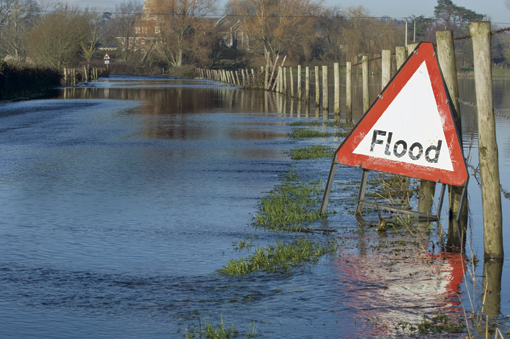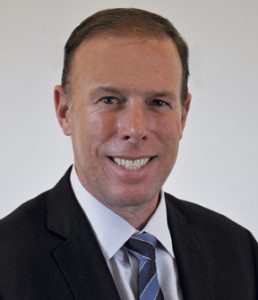THE PRIVATE FLOOD MARKET FINDS ITS FOOTING
Advancements in technology and flood modeling pave the way for better understanding the risks
By Lori Widmer
In September 2021, the National Flood Insurance Program (NFIP) registered 3,976,741 “contracts-in-force” over the previous twelve months. Interestingly, that marks a steady decline in policies. In September 2020, the total contracts-in-force totaled just under 4.1 million.
One possible reason for the decrease: the private flood insurance market. The 2012 Biggert-Waters Flood Insurance Reform Act, meant to encourage more private sector flood insurance participation, and its subsequent amendments refining the acceptance by financial institutions of private flood insurance policies, has paved the way for private insurers. The net premiums in the private flood market written in 2020 totaled $302.4 million, according to data provided by the Insurance Information Institute, up from 2016 totals of $277.8 million.
Not that it was an easy path for carriers. It took some convincing of the market to see the reluctance that many carriers had to flood fade. James R. Watje, senior vice president of private flood at Wright Flood, says that in his career he’s never seen such a seismic shift in attitude. “We as an industry have never seen a peril go from absolutely, positively not insurable in the private space” to being a sought-after exposure for carriers. Watje says one particular insurance executive was quoted as stating that private flood was too catastrophic and unpredictable to adequately price. “Within 12 months, he’s quoted in an insurance journal saying ‘With technology today, we can provide better rates and better coverages than the NFIP.’”
That kind of comfort, he says, is stemming from advancements in technology and flood modeling. Without the models, he says, carriers would not be willing to accept the risk. While there’s not a 100% confidence in the risk, he says, “there’s much more comfort to the point where we have capital, reinsurers, insurance companies, certain agents, and consumers that are interested in looking at what private flood can bring to the marketplace.”

“Every property owner in the United States needs to know that they are exposed to flood risk regardless of what the realtor told them, regardless of what their bank told them. Mother Nature doesn’t look at lines on a map to decide which house to put the water into.”
—James Watje
Senior Vice President, Private Flood
Wright Insurance
A consistent market
“The private market really started to gain momentum a few years ago, and certainly we are seeing increased submissions with the introduction of NFIP’s Risk Rating 2.0,” says Wim Kellett, vice president of the National Flood Program at Johnson & Johnson Insurance.
Risk Rating 2.0, in fact, is a new methodology introduced by FEMA as a means of leveraging best practices and technology to deliver rates that are more actuarially sound and easier to understand, and that more closely reflect a property’s flood risk. This is bringing new companies to the market, says Kellett.
Still, the coverage will not differ much from what the NFIP provides. Part of the challenge for private carriers, says John Dickson, CEO and president of Aon Edge, is that the market has been dominated by NFIP for over five decades. The pathway Congress created to let private capital enter the marketplace, he says, was a specific one. “They said that they can’t offer coverage that is less broad than the federal program. So the federal program coverage has basically become the standard for what’s available.”
Dickson says that carriers have added to the policies, such as covering additional living expenses or the cost of swimming pool clean-out, “but the core coverage around the building and the contents of the structure is pretty consistent across the industry.”
Watje believes that consistency is purposeful. He says the private market brings additional options. “We are not a competitor of the NFIP; we are providing alternatives for property owners across the United States. We always stress the importance for property owners to protect one of their most-prized possessions—their home. We feel it’s important for property owners to know their risks and protect themselves, no matter whether it’s with an NFIP policy or private flood coverage.”
Perhaps the competition in the market, which Dickson describes as “healthy,” is indicative of that type of outcome. He sees plenty of new capital entering the space as well as talk of how to change the pricing experience for agents to make their lives easier. “There are resources now where there were none,” he says of the modeling. “The analyst community is playing an increasing role in how we look at risks, how we underwrite risks, how we price risks, and how we create that experience for agents and home-owners to protect themselves.”
Lack of understanding
But first, they have to know about it. Watje says because the private flood market is so new, there is a learning curve to overcome. “We welcome the opportunity to hold conversations with regulators, insurance companies and agents to explain the differences that the private flood option provides to them. Educating is very key in those discussions.”
That includes agents and brokers. The challenge, the experts say, is how they can sell and communicate the private flood options to homeowners if they themselves don’t understand the product. Dickson says it’s a question homeowners should be asking, as well. “If you’re a consumer, and you’re thinking about your protection, how you preserve your lifestyle, or how you make sure that your investments are covered in your times of greatest need, you have to ask your agent, your insurance professional, about flood insurance. And if your insurance professional says ‘you’re not at risk’ or ‘flood insurance isn’t my thing,’ my counsel is you need to think about a new agent.”
That should be putting agents and brokers on notice. Yet, Watje believes that part of the issue of agents and brokers not understanding the product stems from where it is sold. Much of private flood is sold in the excess and surplus market, where price fluctuations are the norm, and where agents rarely tread. “It’s our belief, and it’s been my experience, that in order for private flood to be as recognized, understood and accepted in the marketplace as a homeowner’s policy or fire insurance policy, it needs to be done on an admitted basis,” Watje says. “What that does is brings consistency, brings stability, and it takes out the volatility that you see in the excess and surplus lines market.”

Claims
However, the volatility of claims still remains. But there’s good news: Dickson says that despite large losses, pricing is remaining fairly consistent. Of the losses, he says, “Too frequently, we’re rolling out the word ‘unprecedented.’ Maybe all of this is actually precedented. Increasing events with increasing severity taking place in locations that have not previously been impacted on such scale” are more common as of late.
Somehow, despite it all, pricing has been resilient. The diversification of capital outside the U.S. market, says Dickson, has helped keep prices in check. Global markets are writing more private flood, which is contributing to the stability in the market.
That stability is welcome news in a claims environment where losses are indeed more frequent and more severe. Weather events, says Dickson, are emerging with greater frequency, and are either stalling as they come ashore or inundating regions far removed from the coastal areas. “Now we’re seeing effects persist long after the storm touches land,” which is causing the industry to rethink how to view storms and their resulting impact.
Some predictability still remains in the market. “The most common claim driver is rain,” says Kellett. “The industry is seeing more and more claims resulting from rain.”
That, Kellett says, is where agents need to be paying extra attention to details. “The agent is responsible for providing accurate details of the risk they are quoting, so my advice to retail agents is to take your time when answering the questions in an application to ensure the answers accurately reflect the risk.”
Selling flood cover
That added attention is imperative right now, says Kellett. “We are seeing a significant increase in quotes for private flood, both primary and excess. The awareness for flood insurance is certainly increased. Consumers are becoming more aware of the need for flood insurance and the benefits of the private market offerings.”

“[I]f your insurance professional says, ‘you’re not at risk’ or ‘flood insurance isn’t my thing,’ my counsel is you need to think about a new agent.”
—John Dickson
CEO and President
Aon Edge
That, Watje says, could go a long way to getting the attention of agents and brokers, and getting them comfortable with selling and servicing flood policies. He suggests that agents and brokers who are quoting property fire insurance also quote private flood right alongside it. “Every property owner in the United States needs to know that they are exposed to flood risk regardless of what the realtor told them, regardless of what their bank told them,” Watje says. “Mother Nature doesn’t look at lines on a map to decide which house to put the water into. Everybody is exposed to it.”
Those recommendations should be made for the benefit of the buyer, not the agent or broker, says Dickson. “For flood insurance to work, it has to work for everybody. It can’t just work for a capital market. It can’t just be a profitable line of business. It has to work for everybody to protect the home- owner. It has to be meaningful for the agents. It has to work for the capital that supports the program, and it has to work for our communities.”
For more information:
Aon Edge
www.aonedge.com
Johnson & Johnson Insurance
www.jjins.com
Wright Flood
www.wrightflood.com
The author
Lori Widmer is a Philadelphia-based writer and editor who specializes in insurance and risk management.






